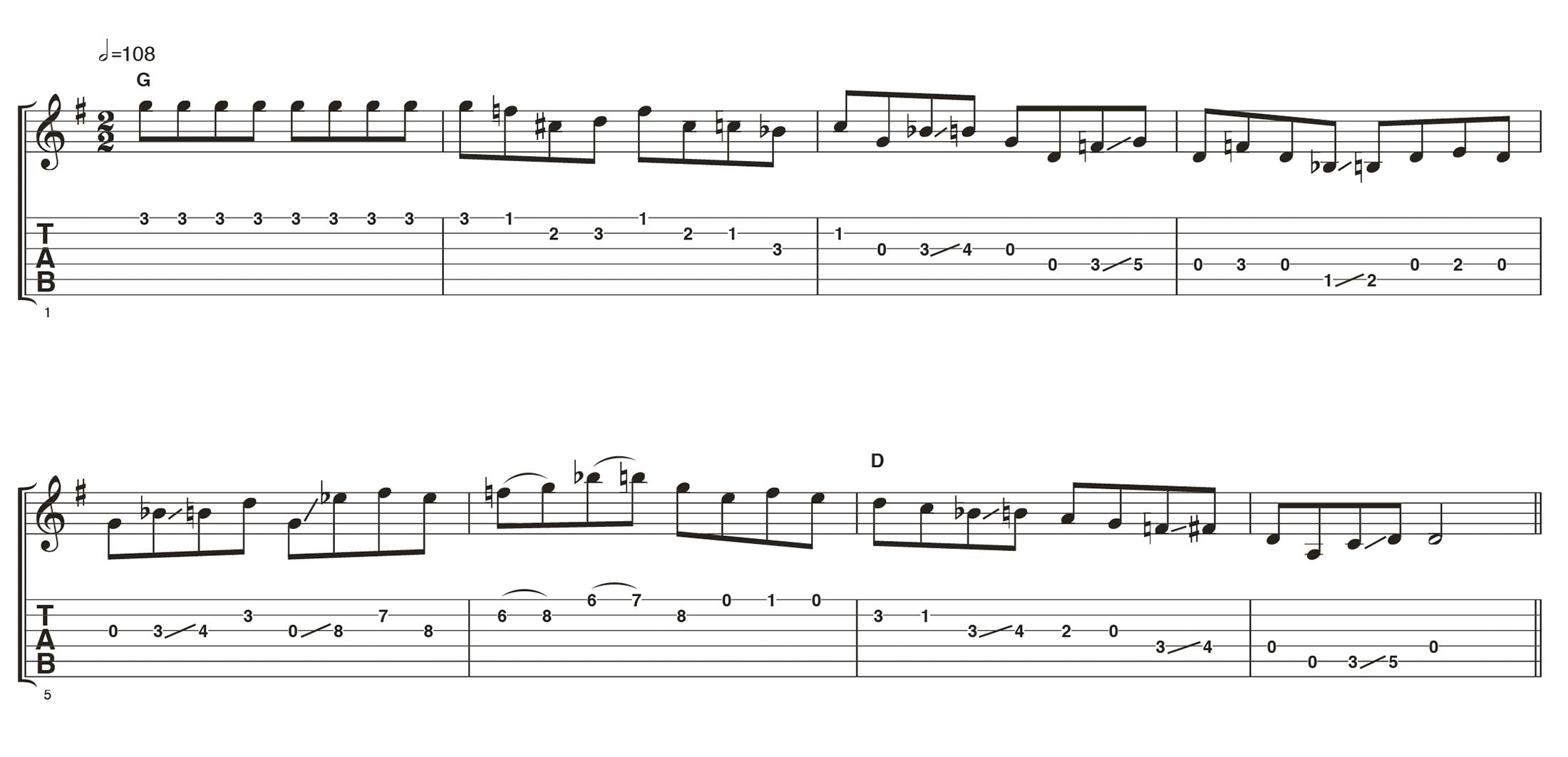How to play bluegrass guitar for beginners
Welcome to our bluegrass primer, with rhythm and lead ideas inspired by contemporary maestro Billy Strings to get you started

One of America’s oldest forms of music, bluegrass was once derided as Hillbilly car-chase music dominated by rattling banjos and insane acoustic guitar picking.
However, with the huge popularity of a new generation of artists like Molly Tuttle and Billy Strings, the style has been freshened up and guitarists are discovering how much fun bluegrass can be. With that in mind, it’s time to get you started with some essential bluegrass basics.
Whilst it can sound like country music to the uninitiated, bluegrass is very much its own style, with unique instrumentation usually made up of vocals, guitar, banjo, upright bass and mandolin, plus resonator guitars often appearing, too.
Drum set accompaniment isn’t so common – bluegrass players lock in with great timing and thinking percussively is a key element of the genre.
The following examples will introduce some of the basic concepts from scale choices to rhythm and blazing licks.
Example 1. Essential bluegrass scale

Bluegrass players really get the style in place by learning classic repertoire, but knowing some suitable scales is a frustration-free way to get the sound too. Here is the major blues scale starting from G and then C. This scale forms the basis of many classic licks.
Example 2. Major blues scale lick

Here’s a classic bluegrass lick showing the G major blues scale in action. In bar 1, notice the slide from the minor 3rd (B flat) to the major 3rd (B) over a G root chord – this movement is integral to bluegrass. Also, note how the G chord is broken up with a bass note/chord approach in bars 2 and 4.
Example 3. Bass and chord groove

All the greatest bluegrass players are masters of rhythm – providing a backing for other instruments is a big part of the style. A typical approach breaks a chord up with a bass note/chord strum pattern. Infinite variations of this exist, but playing across the strings is the main focus.
Example 4. Turnaround lick

Here’s a common turnaround sequence from the V chord (D) to the I chord (G). This example has also been used as an intro countless times and, as with other styles, you need to learn some well-used licks, patterns and sequences so you can start to sound authentic.
Example 5. Guitar solo lick

This lick is inspired by bluegrass prodigy Billy Strings. There’s no getting away from it, rapid-fire alternate picking in the open position is at the core of his style. Both fret hand and pick hand need to be in perfect time with each other, so make sure to practise our lick slowly, breaking it down phrase by phrase.
Get The Pick Newsletter
All the latest guitar news, interviews, lessons, reviews, deals and more, direct to your inbox!
Total Guitar is one of Europe's biggest guitar magazines. With lessons to suit players of all levels, TG's world-class tuition is friendly, accessible and jargon-free, whether you want to brush up on your technique or improve your music theory knowledge. We also talk to the biggest names in the world of guitar – from interviews with all-time greats like Brian May and Eddie Van Halen to our behind the scenes Rig Tour features, we get you up close with the guitarists that matter to you.










![Joe Bonamassa [left] wears a deep blue suit and polka-dotted shirt and plays his green refin Strat; the late Irish blues legend Rory Gallagher [right] screams and inflicts some punishment on his heavily worn number one Stratocaster.](https://cdn.mos.cms.futurecdn.net/cw28h7UBcTVfTLs7p7eiLe.jpg)
